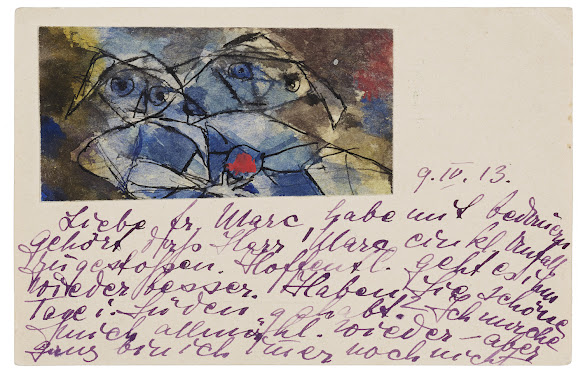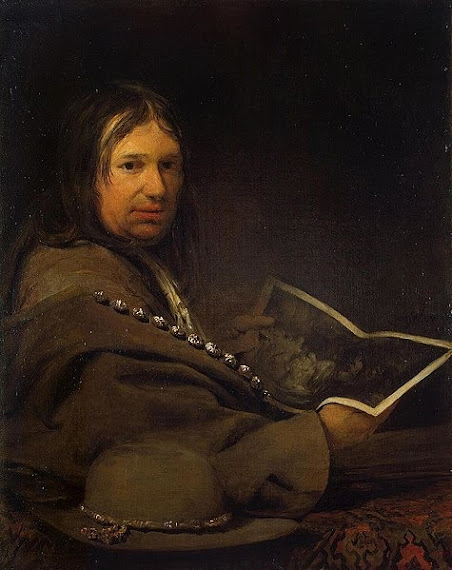Rembrandt - Hundred Guilder Print
Rembrandt - Das Hundertguldenblatt
English / German see below
Rembrandt - Száz guldenes hidegtü nyomat
Ùt a hidegtü technikához: A korábbi, hagyományos fém/rézmetszésböl fejlödött ki a hidegtü, a rézkarc és kicsivel késöbb a borzolás/gravirozás is. Mélynyomású sokszorositó grafikai eljárások ezek. A fém/rézmetszésnél belekarcolták az elöképet a fémbe, majd vésövel mélyitették a vonalmunkát, lefestették és nyomtatták. A késöbbi rézkarc a képzömüvészetben a 16. szazadi Németországban kezdett el lassan terjedni. Elsöként a ékszerötvösök, fegyverkészitök alkalmazták diszitésre majd átvették a grafikusok és elöször vaslapra karcolták fel a kompoziciót majd a svájci Urs Graf alkalmazott elöször rézlemezt. Az eljarás úgy történt hogy, a rézlemezre grafittal rajzolák fel a kompoziciót, majd kikarcolták és savazták ami által a vonalak mélyebbek lettek, igy energia spórolódott meg mert a korábbi eljárás tehát a vésös metszés sokkal több eröt vett igénybe. Majd felvitték a nyomda festéket a rézlapra és nyomtatták.
A 16. században Dürer már a hidegtüvel kisérletezett, ez a technika még egyszerübb volt mint a rézkarc, mert a tüvel felkarcolt motivumot -savazás nélkül- lefestette és már nyomdázta is. Ezt az eljárást a hollandok fejlesztették nagyon magas szintre. Ki kell emelnünk Rembrandt nevét, hisz a hidegtü technikát teljesen önállositotta. Ez annyit jelent hogy a hidegtüeljárás már nem csak gyors és olcsó reprodukciós technika volt hanem önálló müvészi kifejezö módszerként müködött. Rembrandt rengeteg önálló hidegtünyomatot készitett, nem csak a festményeit sokszorozta igy hanem egyedi hidegtüalkotásokat hozott létre. Még halála után is készültek eredeti Rembrandt hidegtünyomatok mivel megmaradtak a karcolt rézlemezei (nyomatdúcai) . Ime egy nagyon ismert Rembrandt-hidegtü példány, amely Jézus életéböl (Máté evangéliuma) egy jelenetet mutat be. Az ábrázolás középpontjában Jézus áll és egy anya aki áldást kér gyermekére. Ez a nyomat, müvészi minösége miatt, már Rembrandt korában is nagyon drága volt, 100 guldent ért - innen jön a száz guldenes hidegtü nyomat elnevezés. Ez is mutatja hogy már a holland aranykorban (17.század) a Rembrandt által önállósitott hidegtünyomat nagy társadalmi elismerésnek örvendett.
Rembrandts Hundertguldenblatt /Kaltnadelradierung
Der Weg zur Radierung: Aus dem früheren traditionellen Kupfergrabstich entwickelten sich die Radierung, der Kupferstich und etwas später auch die Gravur. Dies sind multiplikative graphische Hochdruckverfahrenstechniken. Für den früheren Kupfergrabstich wurde die Komposition auf die Metallplatte gezeichnet und dann mit Grabstichel hineingeritzt/ die Linien vertieft dann wurde die Stricharbeit bemalt und auf Papier gedruckt. Der Kupferstich begann sich in der bildenden Kunst begann in Deutschland im 16. Jahrhundert langsam auszubreiten. Zuerst benutzten es Juweliere und Büchsenmacher zum Präparieren, dann übernahmen Grafiker es und kratzten die Komposition zunächst auf eine Eisenplatte. Der Schweizer Urs Graf verwendete erstmals Kupferplatten. Die auf die Kupferplatte aufgebrachte Graphitzeichnung wurde in die Oberfläche gekratzt und anschließend gesäuert, wodurch die Linien tiefer wurden und somit Energie gespart wurde, da der ältere Grabstichel-Prozess, viel mehr physische Kraft erforderte. Grob zusammengefasst ist das das Kupferstichverfahren.
Bereits im 16. Jahrhundert experimentierte Dürer mit der Kaltnadel, diese Technik war noch einfacher als das Kupferstechen, denn Dürer kratzte/radierte mit einer Nadel das Motiv in den Kupfer, bemalte die Fläche und schon druckte er – OHNE Säuerung!!! Dieses Verfahren wurde von den Niederländern auf einem sehr hohen Niveau entwickelt. Wir müssen den Namen Rembrandt hervorheben, weil er die Technik der Radierung vollständig vom Kupfergrabstich und Kupferstich etablierte. Die Radierung war nicht mehr nur eine schnelle und billige Reproduktionstechnik, sondern fungierte auch als eigenständige künstlerische Ausdrucksform. Rembrandt hat viele unabhängige Radierungen geschaffen. Das bedeutet dass er mit diesem Verfahren nicht nur seine Gemälde duplizierte, sondern auch eigeständige Werke komponierte. Auch nach seinem Tod wurden originale Rembrandt-Drucke hergestellt, da seine radierten Kupferplatten (Druckplatten) erhalten blieben. Hier ist ein bekannter Rembrandt-Kaltnadeldruck (Radierung), der eine Szene aus dem Leben Jesu zeigt (Matthäus-Evangelium). Im Zentrum der Darstellung stehen Jesus und eine Mutter, die um einen Segen für ihr Kind bittet. Dieser Druck war aufgrund seiner künstlerischen Qualität schon zu Rembrandts Zeiten sehr teuer, 100 Gulden wert – daher der Name Hundert-Guldenblatt. Des zeigt auch dass die etablierte Radierung bereits in der Gesellschaft des goldenen Zeitalters hohe Anerkennung gewann.
Rembrandt's hundred gulden sheet / drypoint etching
Etching, copper engraving and, a little later, engraving developed from the earlier traditional copper grave engraving. These are multiplicative letterpress graphic processing techniques. For the earlier copper grave engraving, the prototype was drawn on the metal plate and then scratched with a graver, deepened, then the line work was painted and printed on paper. Etching in the fine arts slowly began to spread in Germany in the 16th century. First jewelers and gunsmiths used it for preparation, then graphic artists took over and first scratched the composition onto an iron plate. The Swiss Urs Graf used copper plates for the first time. The graphite drawing applied to the copper plate was scratched into the surface and then acidified, making the lines deeper and thus saving energy, as the older burin process, i.e. scribing, required a lot of force. This is the engraving process.
Dürer was already experimenting with the drypoint in the 16th century. This technique was even simpler than engraving, because he simply scratched/erased the motif into the copper with the needle, painted the surface and then the printing came - WITHOUT acidification!!! This process was developed by the Dutch at a very high level. We must emphasize the name of Rembrandt because he fully established the technique of drypoint/etching from copperplate and copperplate engraving. Etching was no longer just a quick and cheap reproduction technique, but also functioned as an independent form of artistic expression. Rembrandt created many independent etchings. This means that he not only duplicated his paintings with this method, but also composed independent works. Original Rembrandt prints were made even after his death, as his etched copperplates (printing plates) survived. Here is a well-known Rembrandt drypoint (etching) depicting a scene from the life of Jesus (Gospel of Matthew). At the center of the depiction are Jesus and a mother asking for a blessing for her child. Due to its artistic quality, this print was already very expensive in Rembrandt's time, worth 100 guilders - hence the name hundred guilder sheet.
Texte / szövegek: Szilvia Rad
Krisztus, akinek a gyermekeket bemutatják- száz gulden hidegtü nyomat / 1647-1649, Rijksmuseum Amsterdam, Stuttgart, Albertina Bécs - Christus, dem die kleinen Kinder gebracht werden
(Das Hundertguldenblatt) Rembrandt van Rijn, 1647–1649, Radierung, 27,8 × 38,8 cm, Rijksmuseum Amsterdam
Arent de Gelder ??? Önarckép Rembrandt száz guldenes nyomatával -
Self-Portrait with Etching by Rembrandt (A Portrait of a Collector ?) Arent de Gelder, 1700
Rembrandt: Önarckép, hidegtü nyomat - Rembrandt: Selbstbildnis, Radierung












.jpg)









































